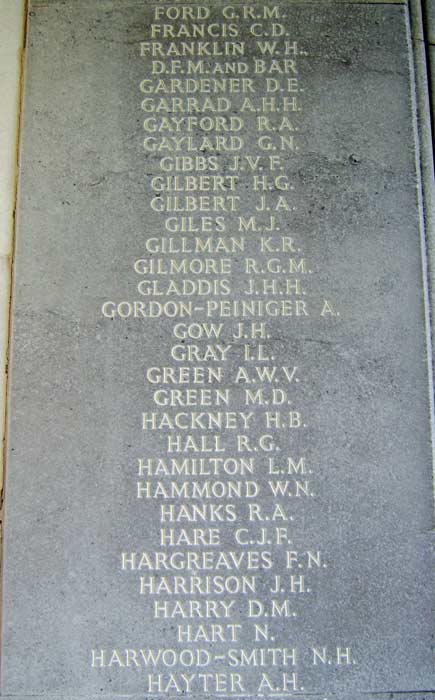The Airmen's Stories - P/O K R Gillman
Keith Reginald Gillman was born in Dover on 16th December 1920, the son of Richard Gordon Gillman and Gladys Annie Gillman.
He attended the County School there from 1933 to 1938. He joined the RAF on a short service commission in March 1939 and began his flying training at 22 E&RFTS Cambridge.
On 10th June Gillman was posted to 15 FTS Lossiemouth, was awarded his flying badge on 6th October and went to the 11 Group Pool at St. Athan on 20th November 1939.
After converting to Hurricanes he was transferred to 2 Ferry Pilot Pool on 21st December 1939 as a reserve for France. Gillman was attached to RAF Manby for No. 1 Air Armament course on 1st January 1940. On completion of the course he joined 32 Squadron at Biggin Hill on 10th May. He flew his first operational sortie on 7th June, escorting Blenheims to Abbeville.

Above: pilots of 'B' Flight, No. 32 Squadron relax on the grass at Hawkinge in front of Hurricane P3522
L to R : F/O RF Smythe, F/O PM Gardner, P/O JE Proctor, F/Lt. PM Brothers, P/O KR Gillman, F/O DH Grice and F/O AF Eckford.

Above: Gillman was the subject of a LIFE magazine cover, published a short while after his loss.
On 19th July Gillman claimed a Me109 destroyed. He did not return from a combat over the Channel off Dover on 25th August 1940 and was reported 'Missing'.
Wing Commander (P/O in August 1940) Jack Rose later recalled that on the morning of 25th August 32 Squadron's pilots were issued with packs of fluorescein, a greenish-yellow dye in powdered form, to sew on their life jackets. In the sea this would create a significant stain around the pilot to attract the attention of searching aircraft. According to Rose's recollection he sewed his pack on and was saved from the sea later that day. Others, including Gillman, did not.
He is commemorated on the Runnymede Memorial, Panel 8.

Above image courtesy of Dean Sumner.

Above: he is also commemorated on a housing estate at Biggin Hill.
|